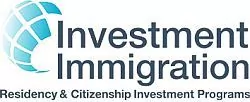The EB-5 visa program was set up in 1990 as an attempt to promote job creation in the US economy by creating an inflow of capital investments from investors residing in foreign countries. The EB-5 program is administered by the USCIS.
The visa program has a built-in sunset clause that comes into effect every three years. This means that Congress has to approve the renewal of the program once in every three years in order to prevent the program from shutting down.
Applicants seeking EB-5 visas are required to make an investment of not less than $1 million in a new or existing business in the USA. Further, the investment must create or maintain at least ten jobs for US workers. Investors can apply after investing a reduced sum of $500,000 if the funds are invested in areas designated as targeted employment areas. The reduced investment must be made into EB-5 Regional Centers. These Regional Centers may consist of private or public economic enterprises that have been set up to increase domestic capital generation, create jobs, and boost regional productivity.
Upon approval of the EB-5 application and transfer of funds into the investment, the foreign investor applicant, and his or her immediate family (consisting of his or her spouse and children aged less than 21 years) will be granted conditional permanent residence in the USA. The investor must fulfill the job-creation requirements for a period of two years in order to become eligible for permanent residence.
Permanent residence is issued only if the minimum investment of $1 million or $500,000 is an “at risk” investment. Capital is only treated as “at risk” if there is a possibility of loss or gain from the investment.
EB-5 investments are normally structured as debt or equity investments. The debt investment option involves creation of two enterprises—the New Commercial Enterprise or NCE, and the Job Creating Enterprise or JCE. The capital investment made into the NCE is loaned to the JCE, which utilizes the funds to create the minimum number of jobs required by the EB-5 visa. The JCE repays the loan along with interest ranging between 5% and 8%. The NCE can be liquidated only after the JCE repays the entire loan.
Under the equity investment option, the investor acquires a true or preferred stake in the JCE upon making the minimum capital investment. The equity stake can be issued through a NCE or directly to the immigrant investor. The equity option is the most preferred choice primarily because immigrants seeking permanent residency rarely focus on the rate of return offered by the investment. Further, this option is preferred by developers who enjoy access to funds along with the option of sharing profits with the investors.
Demand for EB-5 visas is high amongst Chinese citizens. Approximately 9128 applicants, constituting more than 85% of all applications, are from China. South Korean applicants are next with 225 applications while Mexico and Brazil followed with 129 and 30 applications respectively.
The EB-5 visa does not offer unrestricted control over the investment or business at hand. This is often suggested as the primary reason why many EB-5 investments have eventually ended up becoming ordinary investments. This can be frustrating for those investors who would prefer the freedom to run the business in accordance with their own strategies. All entrepreneurs accept the possibility of incurring a loss on their investment. However, most entrepreneurs prefer to lose money themselves rather than to let somebody else do it for them.
